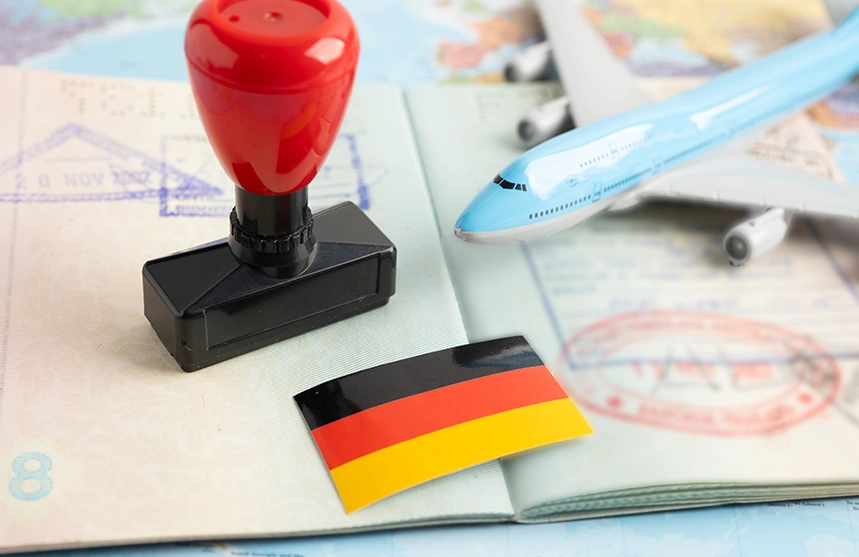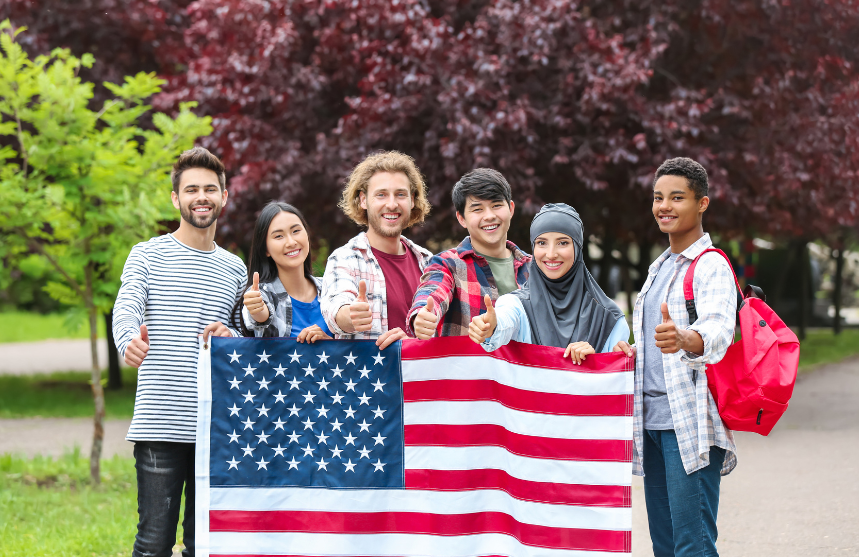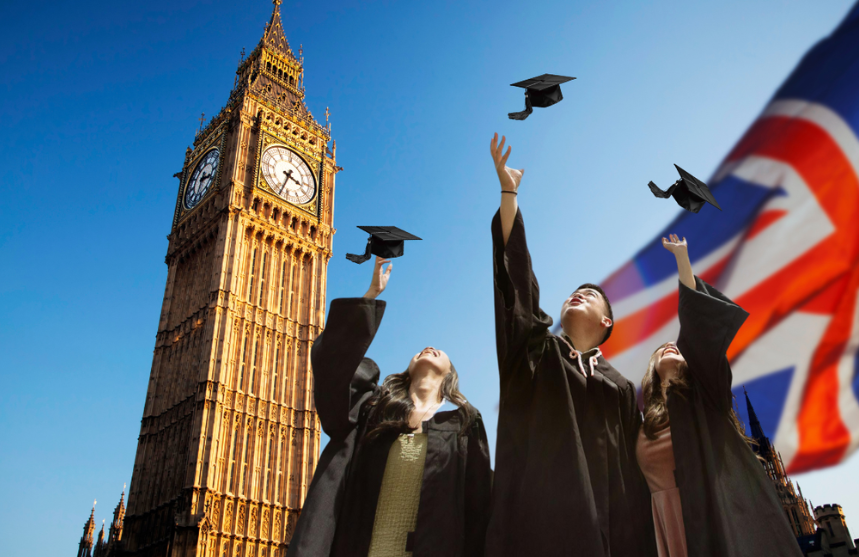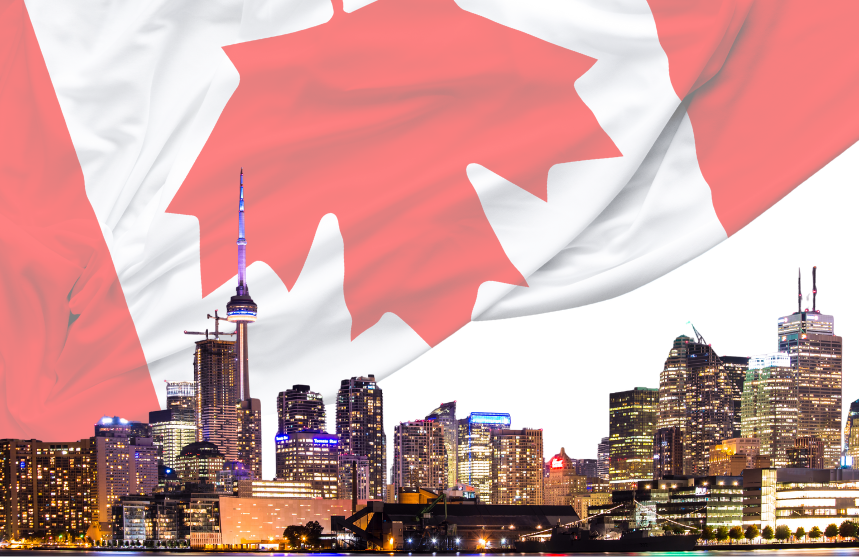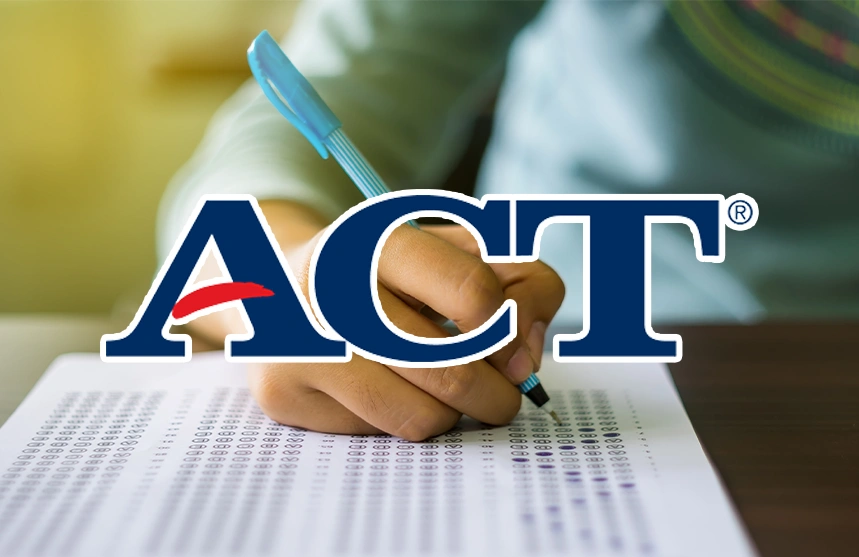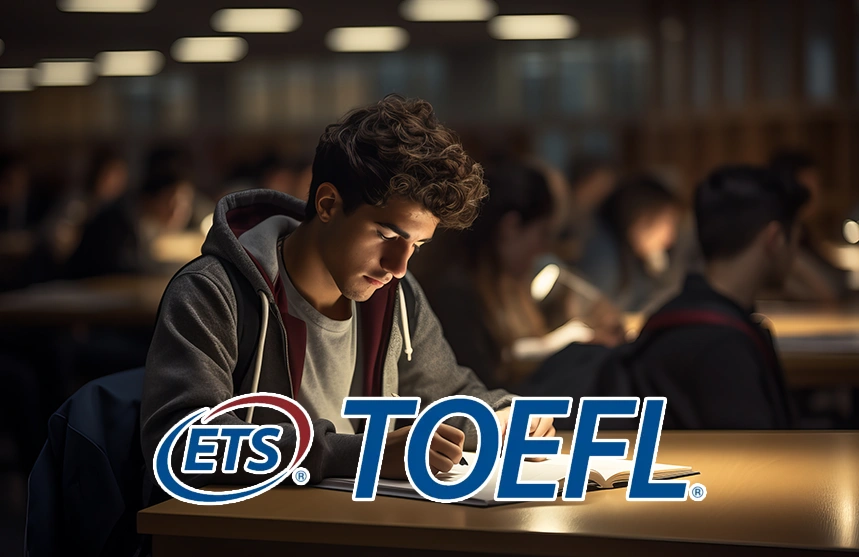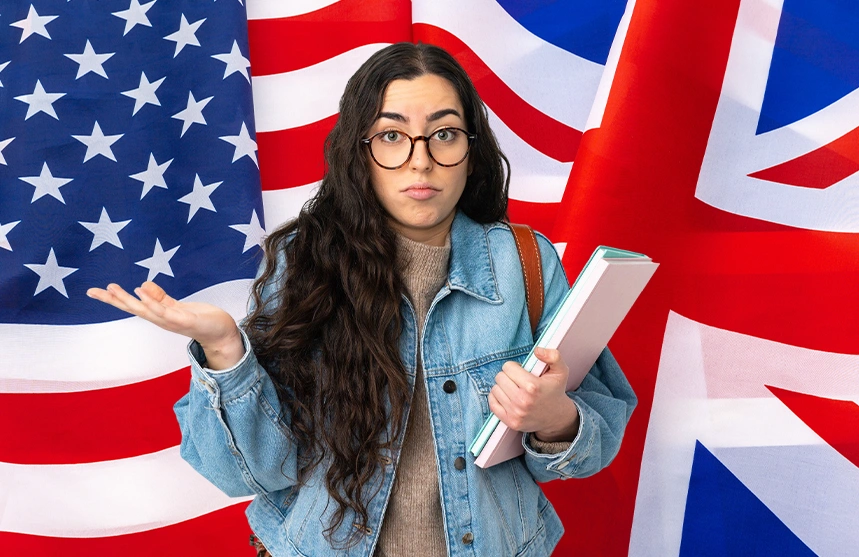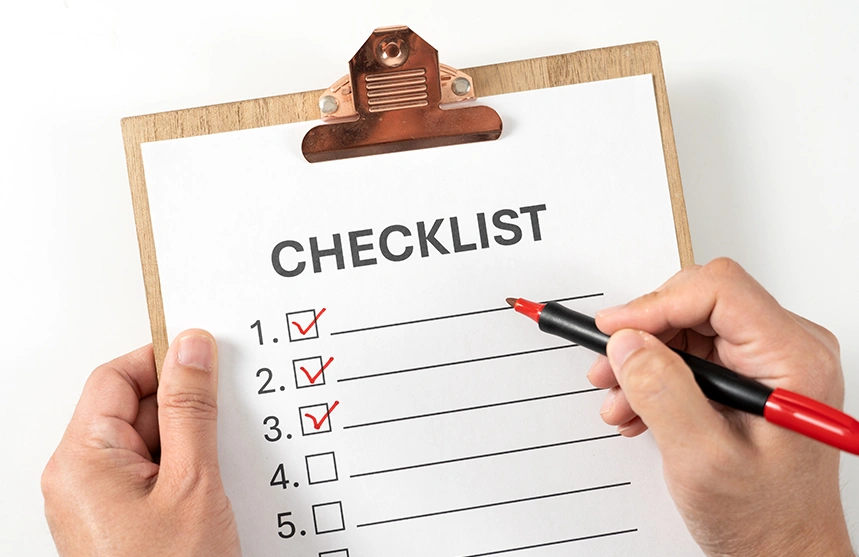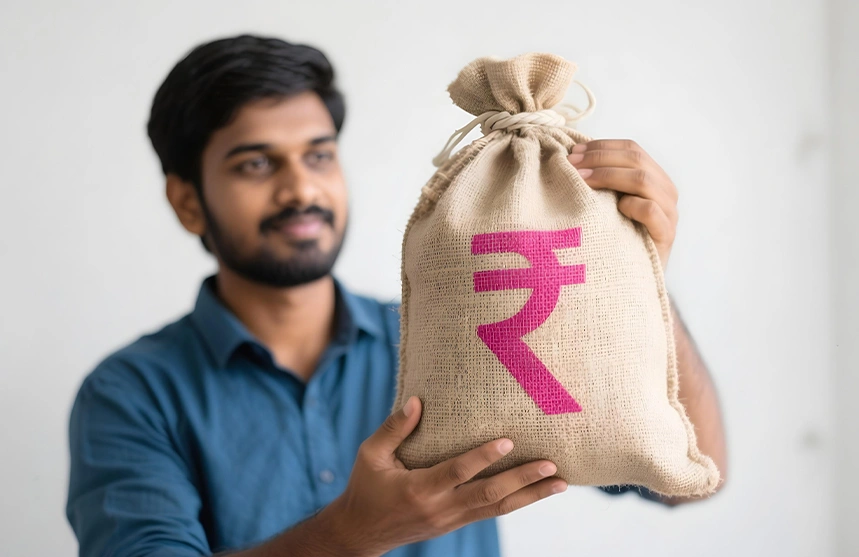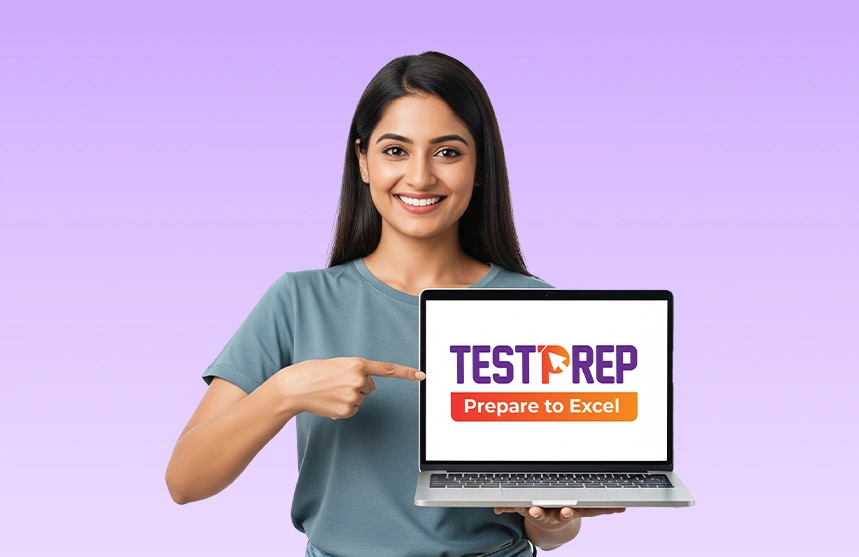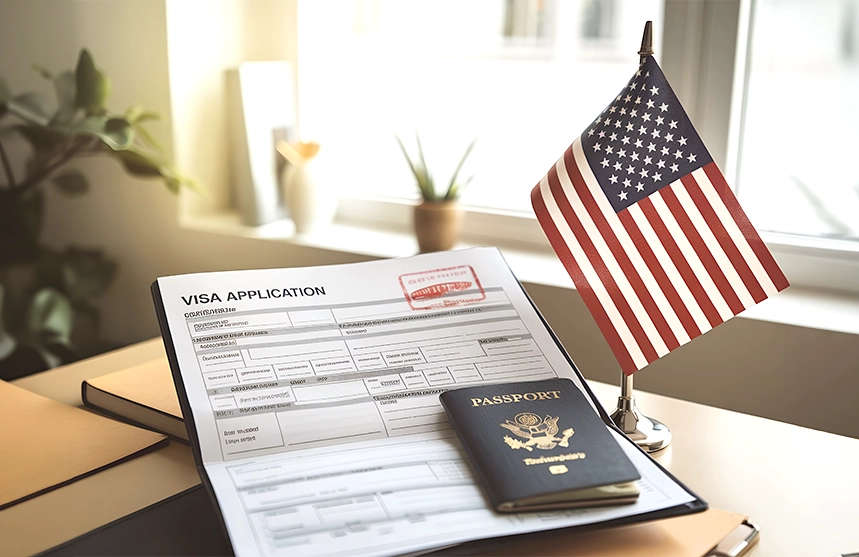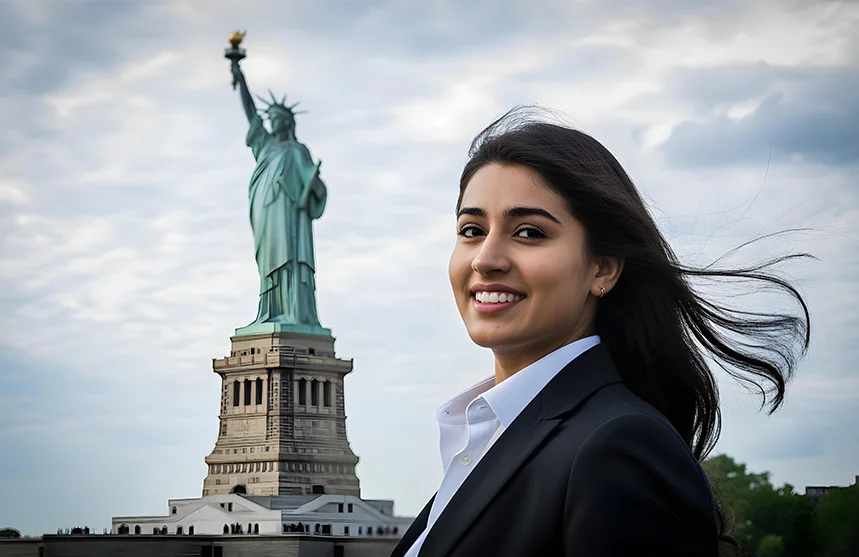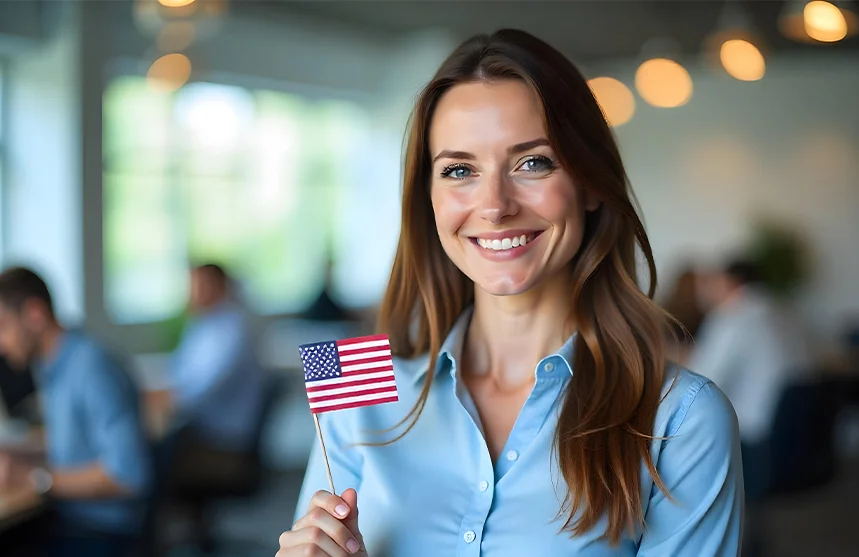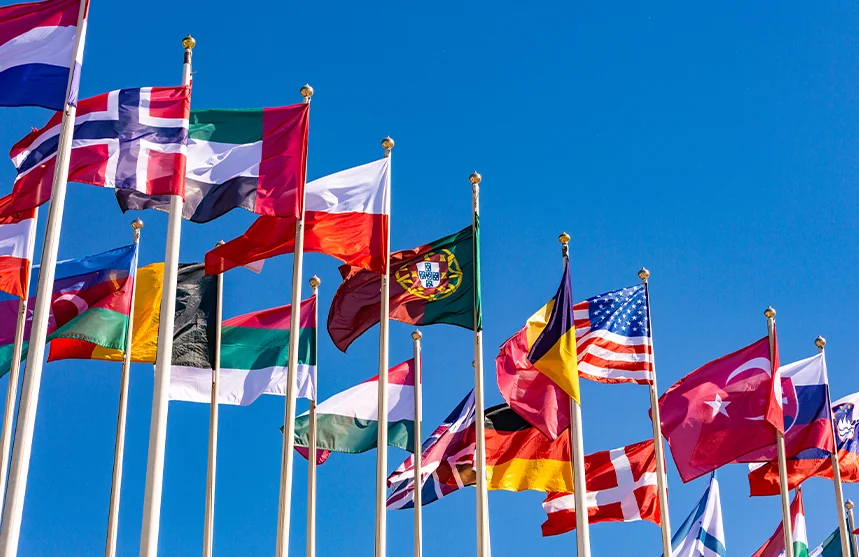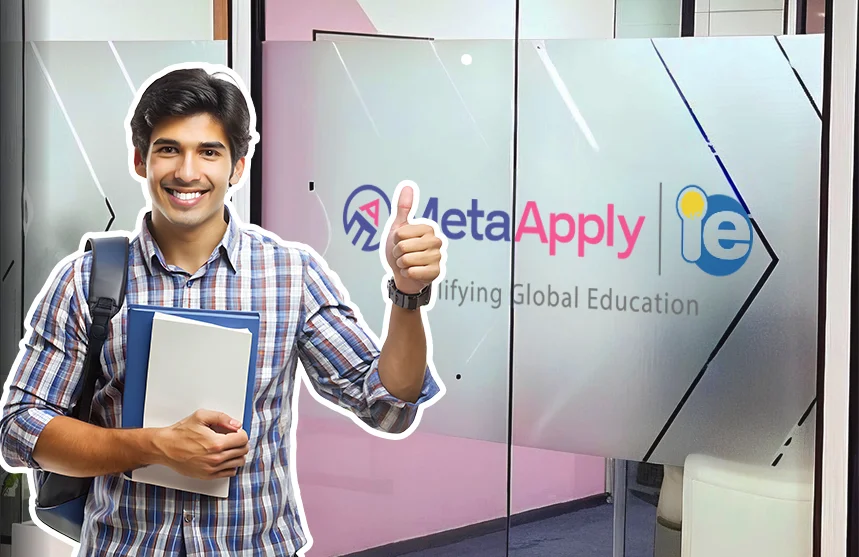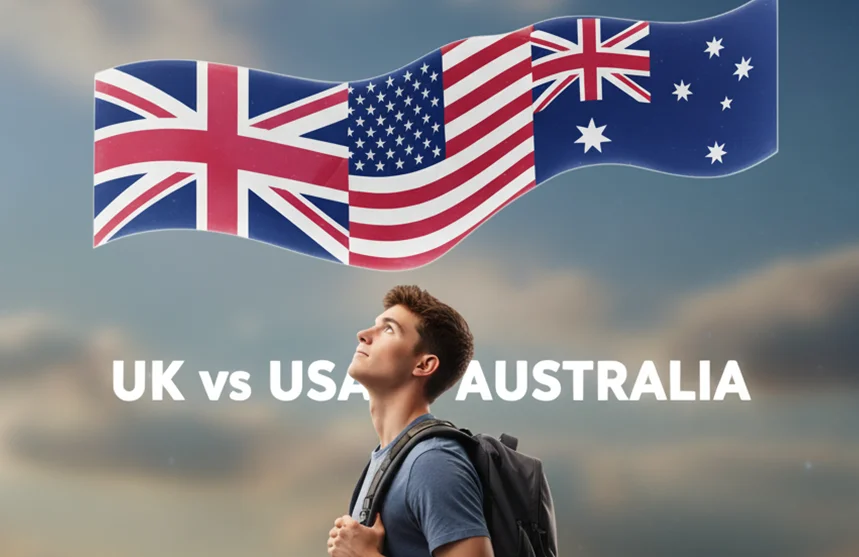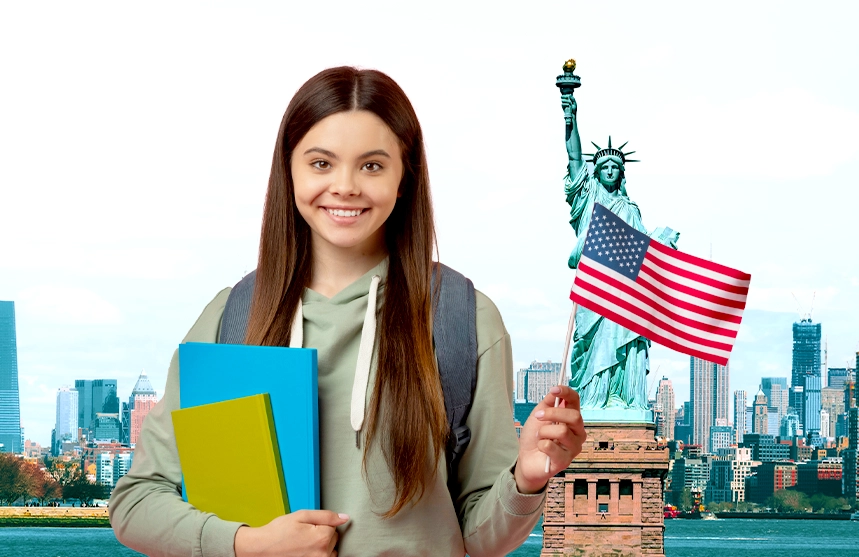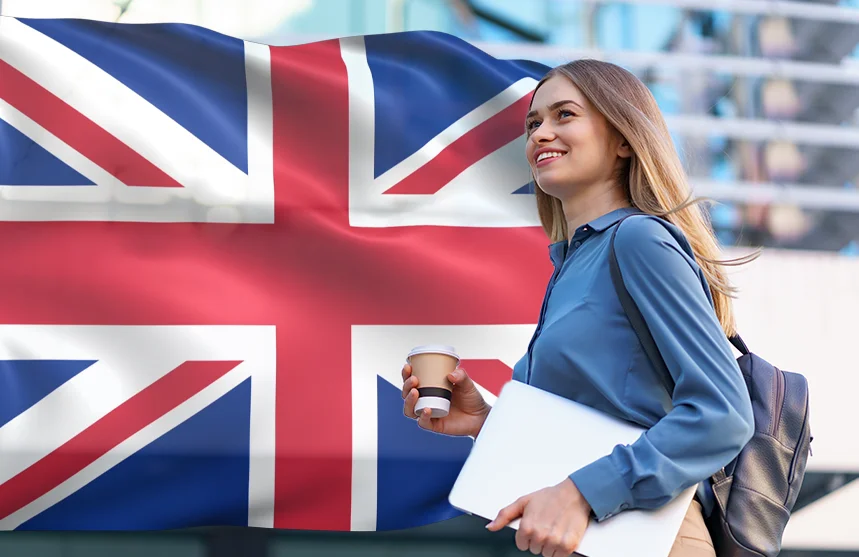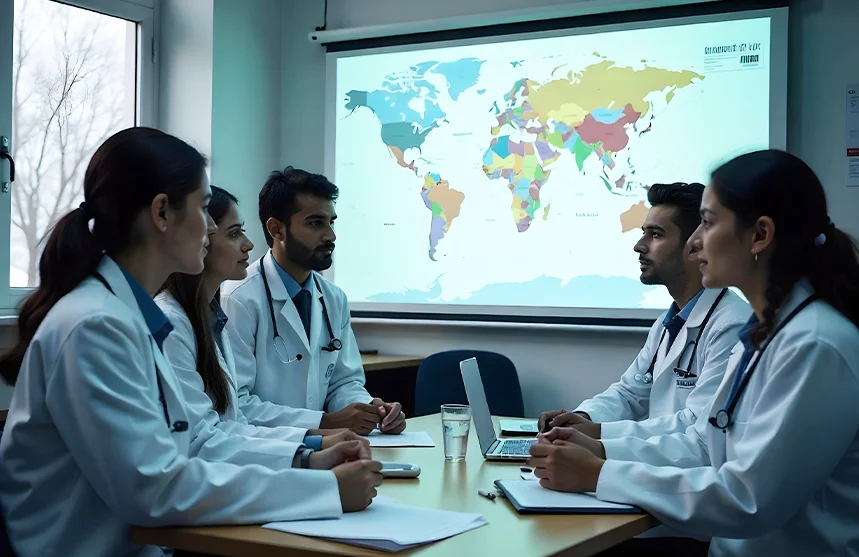GMAT Preparation Guide for Indian Students: Your Step-by-Step Roadmap to Success
How to Avoid the USA Student Visa Rejection in 2025?
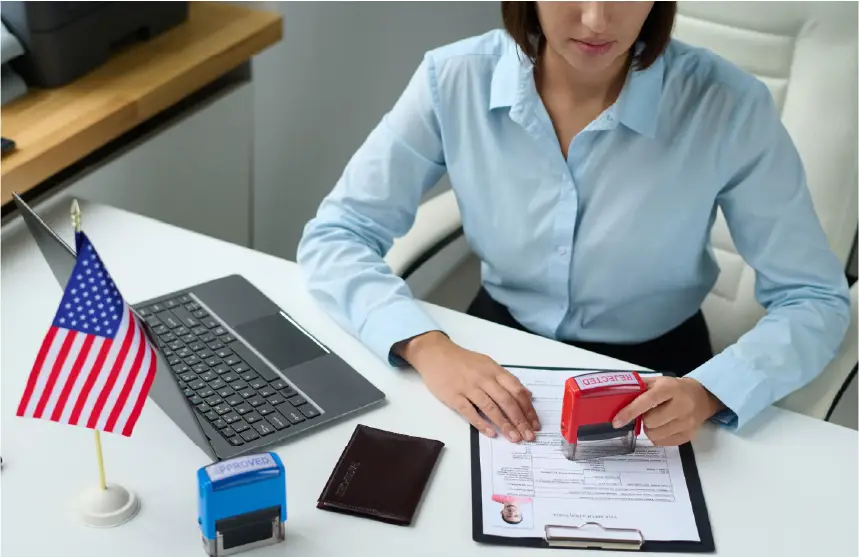
Here, here! Soon the ball will drop at Times Square and the USA will step into the new year 2025. As the new year brings new opportunities, you can get a chance to witness the New Year’s Eve balls dropping and be a part of many such exciting moments next year that will be added to your list of memories forever.
There is a difference between visiting the States as a tourist and getting a chance to study there. Being a tourist you may have limited time and possibilities of watching the Broadway shows, walking through the busy lanes of Manhattan, and even wandering through the Brooklyn Bridge.
On the other hand, when you decide to study in the USA, you get a chance to explore all these things until your degree is completed. However, like always, there is a catch! In recent times, there has been a significant drop in the US student visa success rate. So, as we know, you can’t get to the USA without having a visa, let’s help you get complete knowledge on the topic.
In this blog, we are going to explore what are the types of student visas for the USA, common reasons for visa rejection, and some tips on how to avoid visa refusal. Hence, without further ado, let’s get started.
Types of Student Visas for the USA
When you are planning to study in the USA, you definitely need a student visa. However, most of the time, students get confused about which is the accurate student visa for their course of study. For your assistance, in this section, we are going to explain the major student visas that are required to study in the States. So, let’s ease your confusion and explore the accuracy.
F-1 Visa- The Most Common Visa
The first most common student visa that is required by international students to study in the USA is the F-1 visa. This student visa serves the purpose of allowing students to pursue a degree or long-term program at any USA university or college. The only eligibility requirement for an F-1 student visa is that you must be enroled in an American university or college. Besides that, you must have proof of sufficient funds that you can support your financials throughout your education period in the States. Moreover, the F-1 visa also requires an I-20 form that is issued by the US government.
An F-1 visa duration covers the entire degree period, in addition to that, this visa gives an optional 60-day grace period after the degree completion. The F-1 student visa permits work authorisation, which means students are allowed for on-campus employment for up to 20 hours per week during term sessions and full-time during breaks.
Additionally, for off-campus employment, students who are enroled in STEM courses for post-graduation, get a chance for Optional Practical Training- OPT for up to 12 months.
J-1 Visa- For Exchange Programs
The next in the line of student visas to study in the USA is the J-1 visa. This visa serves the purpose of an exchange visitor visa. In simple words, this visa is required for students who want to study in an exchange program. Now, if we talk about what is exchange program, suppose you are already a student at one of your home universities, but you wish to study some other course at any of the USA universities, then you will be known as an exchange student. To complete your further education in America, you will need a student exchange visa, which is J-1.
The only eligibility requirement for this visa is, that you must be enroled in an exchange program that requires you to study in a US university for a fixed period. For a successful J-1 visa, you must be sponsored by an authorised US program sponsor. The duration of this visa depends on the length of your remaining study years. Talking about the work authorisations, an exchange student is only allowed to work in a part-time internship or work in the field of their exchange study program.
Do note that this visa covers a broader range of academic and non-academic exchange programs, including research scholarships, teachers, and trainees.
M-1 Visa- For Vocational Education
If you are going to the US to pursue higher education in fields with practical knowledge and skill enhancement, then you need an M-1 visa, which is for vocational education only. Vocational education contains courses like healthcare, skilled trades, creative arts, culinary arts, and technology. To get the best practical knowledge from a top study destination becomes crucial.
In order to plan your vocational education journey in the USA, all you need to do is have an admission acceptance letter for a full-time vocational program. Along with that, you must showcase you have enough funds to support yourself throughout your educational journey in the US.
Talking about the work permit for an M-1 visa, there is as such no authorisation for that; however, there is an exception for practical training after completing the vocational course.
Besides these student visas, there are a few others that are granted to students for shorter periods. Here is a list of the same:
- J-1 visa is for summer work and travel program. This visa is for students who want to pursue summer work programs during the summer breaks.
- B-2 visa is usually the tourist visa people get to visit the United States. However, students who want to participate in a short-term program or conferences can also apply for this visa.
Now, that you have seen which visa is most appropriately suited to you. It is time for you to know about the visa rejection cases. Indeed, no one wishes to get their visas rejected impacting their study abroad dream. So, to ensure nothing like that ever happens to you, in the following sections let’s see what are all the precautions that you can take.
Common Reasons for Student Visa Rejection
Why visa gets rejected? Why God, why? Okay, that went a little over dramatic, but none of us are Joey from Friends!
Coming to our point, why do visas get rejected? Is there any specific reason or is there something that you are doing wrong? Well, let’s explore it here.
According to The Financial Express, in 2023, the refusal rate rose to 36 percent totalling 253,355 refusals, exceeding 2022 levels. If you don’t want to land in the pile of rejected student visas, then let’s look at some of the common reasons for student visa rejection.
- Incomplete or Incorrect Application: One of the main reasons for student visa rejection is incomplete or incorrect student application. When applying for the first time, students surely aren’t aware of the correct process. This leads to making minor mistakes such as missing documents, providing incorrect information, or discrepancies between different sections of the application. All these mistakes become a reason for student visa rejection.
- Insufficient Financial Support: Another reason for visa refusal is students failing to prove they have sufficient funds to support their foreign education. When filling out the visa application, it is crucial you demonstrate how you are going to support your education and living expenses in the US throughout your educational journey. As the US government seeks to ease students’ financial burden, showcasing your financial proof accurately is a must.
- Criminal Records: In the list of F1 visa rejection reasons, the next is having a criminal record in your name. The US government performs a thorough background check, and any past criminal activity may raise questions about your intention to visit, leading to visa application rejection.
- Failure to Attend Visa Interview: Another reason why visa gets rejected is because the applicant could not make it to the visa interview on time. The visa interview is a crucial step in the process. Every applicant is supposed to answer the US consular officer’s questions and concerns. Failure to do so leads to visa rejection. Also, if you are not present for the visa interview and your reason for that is not valid enough it may contribute to the USA student visa rejection rate.
- Fraudulent Documents: One more reason for F1 student visa rejection is the suspicion or detection of fraudulent documents. The US visa authorities are serious about every step of the process. Hence, they perform rigorous background checks and give attention to every submitted document. In case any document provided falls under suspicion, there are chances of the visa getting rejected. Not just that but the fraudulent documents may also lead to an automatic and permanent ban.
Now, when your dreams and ambitions are in line, you cannot afford any minor mistake that leads to your student visa refusal. So, to help you more, let’s look at some tips to avoid getting your visa rejected.
Tips to Avoid US Student Visa Rejection
Having your student visa approved to study in the USA is crucial. When you can’t take any risks to get your application rejected, then let’s look at some of the mistakes that you can avoid and ensure a successful visa application approval.
Complete and Flawless Application:
First things first, when you start filing your student visa application, you must ensure to take your time and fill each section with utmost accuracy. Ensure there is consistency in all your documents. As you are required to fill out a DS-160 form and an I-20 form, it is crucial to have discrepancies between all the documents, otherwise, it can raise questions. Also, at the time of visa application submission, double-check all the required documents. In case something is missing or something inaccurate, do correct it with external professional support or yourself before submitting your application.
Prove Your Financial Stability:
To escape the list of USA student visa rejection rates, you should provide your financial stability accurately. When submitting your F1 student visa application, you should provide proof that you can cover your tuition fees, living expenses, and other attached expenses while studying in the USA. The list of financial proof can be anything, for instance, your scholarship letters, education loans, or personal funding. One more thing you must take care of is your bank statements, at all times, your bank statement should have sufficient funds so that no questions are raised on that. As you can’t afford any suspicions, be clear about the source of money, whether family, university, government, or relative funding your education abroad.
Stay Confident During the Visa Interview:
Interview! Even the word is enough to make your spine chilly. The adrenaline rush, overwhelming feeling, anxiousness, and nervousness all bounce up when you are supposed to give an interview. In this case, many applicants seem to fumble or break down in front of the interviewer, which gives a negative impression. To avoid any such mistake, you better be prepared and practice an official interview before taking one. The consular officer may ask difficult or tricky questions, but you have to maintain your calm and answer each question with confidence. Avoid over-explaining or providing irrelevant information, prefer keeping your answers brief and to the point. Lastly, never try to provide false information or withhold information because this can lead to visa refusal.
Show Strong Ties to Your Home Country:
In the list of F1 visa rejection reasons, failing to provide strong ties to your home country can also affect your chances. So, when you are filling out your visa application or sitting at the visa interview, you must prove your intent to return. The US consular officer wants to know what your intention is after completing your degree in the United States. Hence, you must demonstrate your intentions by showcasing your family ties example; parents and siblings living in your home country. This can also contain your career prospects in your home country, or even any showcasing you have properties or assets in your home country that will encourage you to return to your home country.
Submit a Strong Statement of Purpose:
To get your student visa approved to study in the USA you must provide a Statement of Purpose. Now, this SOP can be similar to the one you sent along with your college admission application; however, this can’t be the replica. Your visa SOP is a chance to convey your intentions, goals, and reasons for studying in the United States, hence it must be well-written, sincere, and tailored to the degree you are going to pursue and the university where you are going to study. To write a stellar SOP, you must mention your academic background, career goals, and specific program that will help you achieve the same.
Prepare for Your US Student Visa Approval with MetaApply
The new academic year is almost here knocking on your door, and it is better if you start preparing for your study abroad plans now. If you are aiming to pursue a degree in any of the American universities then you must need a study visa. In this blog, we have covered all the crucial information to ensure your student visa gets approved at any cost.
So, if you are all set to make the next step and start preparing for your US study visa, then you not only just need to keep the tips in mind and avoid the common mistakes but also need experts’ support. We understand that when you are filling out the information for the first time you don’t know the correct procedure. As the I-20 and DS-160 forms have many pages and each section needs to be filled out accurately, rather than risking it with wrong information, you can connect with us.
At MetaApply, we have a dedicated team for each destination. So, no matter what your challenge is with your preferred study destination at our Experience Centres you get dedicated support. Whether you are struggling with a student visa requirement list or booking a visa slot, you can count on us because we have got your back.
Frequently Asked Questions
To avoid US visa rejection, this is what you should do; apply early and check the application form is complete, accurate, and accompanied by all the required documents. This includes showcasing the proof of financial stability and ties to the home country. Besides this when sitting in the visa interview showcase you are confident and ensure your response matches with what you have written in your SOP.
It depends on the reason for your visa rejection in the first place. If the rejection reason is due to illegal activities, then you might find it difficult to get visa approval in the next chance. However, if there is some other reason, then you can reapply for your study visa along with proving you have strong home ties so this will convince the consular officer.
Demonstrating proof of funds is crucial in your visa application. You have to show that you have sufficient balance to live in the USA throughout your academic journey. So, if you have a scholarship that can cover your tuition fees and you have enough funds to manage other expenses then yes, a scholarship surely increases visa chances.










